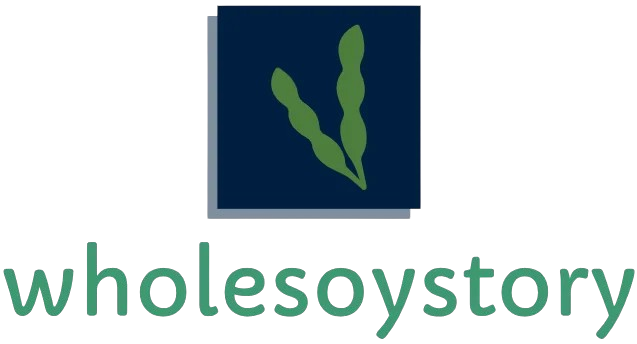Soy is one of the most widely grown and consumed crops in the world. As a versatile ingredient used in everything from plant-based products to animal feed, its demand has skyrocketed over the past few decades. While soy offers numerous health benefits and serves as a crucial protein source for both people and animals, its production comes with significant environmental consequences. In this post, we’ll take a closer look at the environmental impact of soy production and what consumers and producers can do to address these issues.
1. Deforestation and Habitat Loss
One of the most pressing environmental concerns related to soy production is deforestation. Large-scale soy farming is a significant driver of deforestation, particularly in South America, where vast areas of the Amazon rainforest are cleared to make room for soy plantations.
- Why It’s a Problem:
- Biodiversity Loss: The Amazon and other tropical forests are rich ecosystems that house a wide variety of plant and animal species. Deforestation for soy farming destroys these habitats, putting numerous species at risk of extinction.
- Carbon Emissions: Trees play a critical role in absorbing carbon dioxide (CO2) from the atmosphere. When forests are cleared, the carbon stored in trees is released back into the air, contributing to climate change.
- What’s Being Done:
- Sustainable Soy Certifications: Organizations like the Round Table on Responsible Soy (RTRS) and ProTerra certify soy products that are grown using sustainable practices that help protect forests and ecosystems.
- Soy Moratorium: The Brazilian Soy Moratorium, established in 2006, is an agreement among soy traders to not purchase soy grown on recently deforested land in the Amazon.
2. Water Consumption and Pollution
Soy farming requires significant amounts of water for irrigation, particularly in regions where rainfall is inconsistent. Large-scale soy plantations can contribute to water depletion in surrounding areas, especially when water resources are already strained.
- Why It’s a Problem:
- Overuse of Water Resources: Excessive water use in soy farming can lead to depletion of rivers and groundwater supplies, impacting local communities and ecosystems.
- Water Pollution: The use of pesticides and fertilizers in conventional soy farming can result in water pollution. These chemicals can run off into nearby rivers and streams, harming aquatic life and contaminating water supplies.
- What’s Being Done:
- Improved Irrigation Techniques: Techniques such as drip irrigation and rainwater harvesting can help reduce water usage in soy farming.
- Agroecological Practices: Sustainable farming methods, including crop rotation and organic farming, help reduce the need for harmful chemicals and minimize water waste.

3. Soil Degradation and Erosion
Intensive soy farming can lead to soil degradation and erosion. As soy plantations expand, natural vegetation is removed, and the soil becomes less fertile over time.
- Why It’s a Problem:
- Soil Erosion: Without plant cover to hold the soil in place, heavy rains can wash away topsoil, reducing the land’s productivity and increasing the likelihood of floods.
- Loss of Soil Fertility: Repeated monoculture farming (growing soy on the same land year after year) depletes essential nutrients in the soil, making it harder for crops to grow.
- What’s Being Done:
- Agroforestry: Incorporating trees and other plants into soy farming helps maintain soil fertility and prevents erosion.
- Crop Rotation: Rotating soy with other crops, such as legumes, can help restore nutrients to the soil and reduce the need for chemical fertilizers.
4. Greenhouse Gas Emissions from Soy Farming
Soy farming, particularly when it involves deforestation and land conversion, contributes significantly to greenhouse gas emissions. The process of clearing land, along with the use of fossil fuels in planting and harvesting, leads to the release of carbon dioxide and methane.
- Why It’s a Problem:
- Carbon Emissions: The destruction of forests for soy production releases massive amounts of CO2, further exacerbating climate change. Additionally, soil disturbance from farming can release carbon stored in the soil.
- Methane Emissions: Methane, a potent greenhouse gas, can also be released during the fermentation of plant matter in soil and from the decomposition of organic matter.
- What’s Being Done:
- Climate-Smart Agriculture: Practices like no-till farming and conservation tillage help reduce soil disturbance and lower carbon emissions.
- Regenerative Farming: Regenerative agriculture aims to rebuild soil health and carbon storage while also addressing emissions. Practices such as planting cover crops and integrating livestock can help offset some of the environmental impacts.
5. Ethical Considerations of Soy Farming
In addition to environmental concerns, there are ethical issues related to the workers involved in soy production. Labor conditions can be harsh, and farmers may face exploitation, especially in developing countries where soy production is often outsourced to third-party suppliers.
- Why It’s a Problem:
- Labor Exploitation: Poor working conditions, low wages, and lack of labor rights are significant issues in some soy-growing regions.
- Impact on Indigenous Communities: In some regions, large-scale soy farming has displaced indigenous populations, forcing them off their land and disrupting their traditional ways of life.
- What’s Being Done:
- Fair Trade and Ethical Sourcing: Certifications such as Fair Trade and Rainforest Alliance help ensure that soy is grown with respect for labor rights and fair wages for workers.
- Support for Small-Scale Farmers: Supporting small-scale and sustainable soy producers who prioritize worker welfare and community involvement can help promote ethical soy farming practices.
How to Make More Sustainable Soy Choices
As a consumer, you can make a positive impact by being mindful of where and how soy is produced. Here are some steps you can take to make more sustainable soy choices:
- Look for Sustainable Certifications: When purchasing soy products, look for labels like RTRS or ProTerra, which indicate the product has been grown with sustainable practices.
- Buy Organic: Organic soy farming tends to use fewer chemicals, reducing the impact on both the environment and human health.
- Support Local and Regenerative Farms: Whenever possible, choose soy produced locally or by farms that practice regenerative agriculture.
- Reduce Soy Consumption: While soy is an important part of many diets, reducing your overall soy consumption can help reduce demand and its environmental impact.
Conclusion
Soy plays a significant role in feeding the global population and providing a sustainable protein source for both humans and livestock. However, the environmental impact of its production cannot be ignored. From deforestation and water depletion to soil degradation and emissions, soy farming poses significant ecological challenges. By supporting sustainable farming practices, making ethical choices, and being mindful of soy consumption, we can all contribute to reducing the negative impact of soy production on the environment.











